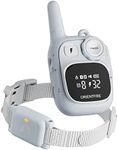Buying Guide for the Best Shock Collar For Small Dogs
Choosing a shock collar for small dogs requires careful consideration to ensure the safety, comfort, and effectiveness for your pet. Since small dogs are more sensitive than larger breeds, it's important to focus on features that allow for gentle correction and precise control. Always prioritize your dog's well-being and look for collars that offer humane training options. Understanding the key specifications will help you make an informed decision that matches your dog's size, temperament, and training needs.Stimulation LevelsStimulation levels refer to the range of intensity settings the collar can deliver, from very mild to stronger corrections. This is important because small dogs are more sensitive and require lower levels of stimulation to respond effectively. Collars with a wide range of low-intensity settings allow you to find the gentlest level that works for your dog. When choosing, look for collars that start at a very low level and increase gradually, so you can tailor the correction to your dog's comfort and training progress.
Collar Size and AdjustabilityCollar size and adjustability determine how well the collar fits your small dog. A collar that's too large or heavy can be uncomfortable or even harmful. It's important to choose a collar designed specifically for small breeds, with a lightweight and slim profile. Adjustable straps ensure a snug but comfortable fit, preventing the collar from slipping off or causing irritation. Measure your dog's neck and compare it to the collar's size range to ensure a proper fit.
Contact PointsContact points are the parts of the collar that touch your dog's skin to deliver the stimulation. For small dogs, shorter and softer contact points are preferable to avoid discomfort or skin irritation. Some collars offer interchangeable contact points made from different materials, such as rubber or silicone, which can be gentler on sensitive skin. Choose a collar with contact points that suit your dog's coat length and skin sensitivity.
Training ModesTraining modes refer to the different types of corrections the collar can provide, such as beep, vibration, and static shock. Having multiple modes is important because it allows you to start with the least invasive option, like sound or vibration, before using static correction. This is especially useful for small dogs, who often respond well to milder cues. Select a collar that offers a variety of modes so you can use the most appropriate and humane method for your dog's training.
RangeRange indicates how far the remote can communicate with the collar. This is important if you plan to use the collar outdoors or in large spaces. For small dogs, a shorter range may be sufficient if you only need it for home or yard training, while a longer range is useful for parks or open areas. Consider where you'll be training your dog most often and choose a range that matches your needs.
Water ResistanceWater resistance describes how well the collar can handle exposure to water, such as rain or splashes. This is important if your dog is active outdoors or might get wet during training. Some collars are splash-proof, while others are fully waterproof and can be submerged. Think about your dog's activities and choose a collar with the appropriate level of water resistance to ensure durability and safety.


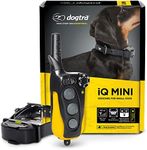
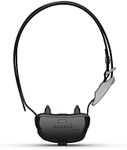

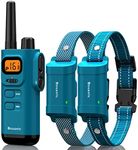

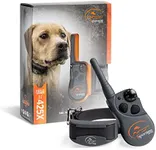
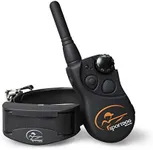




![ABBIDOT Shock Collar - [2024 Version] 178 Levels Dog Training Collar with Remote, 4100ft Dog Shock Collar, Remote Waterproof E Collar for Small Medium Large Dogs with E-cliker, Up to 6 Dogs](https://images-proxy.bestreviews.guide/WpRuSpz3cMmPJ4m7anjwp60SnE4=/0x150/https://m.media-amazon.com/images/I/518O6C4mrmL._AC_CX679_.jpg)
